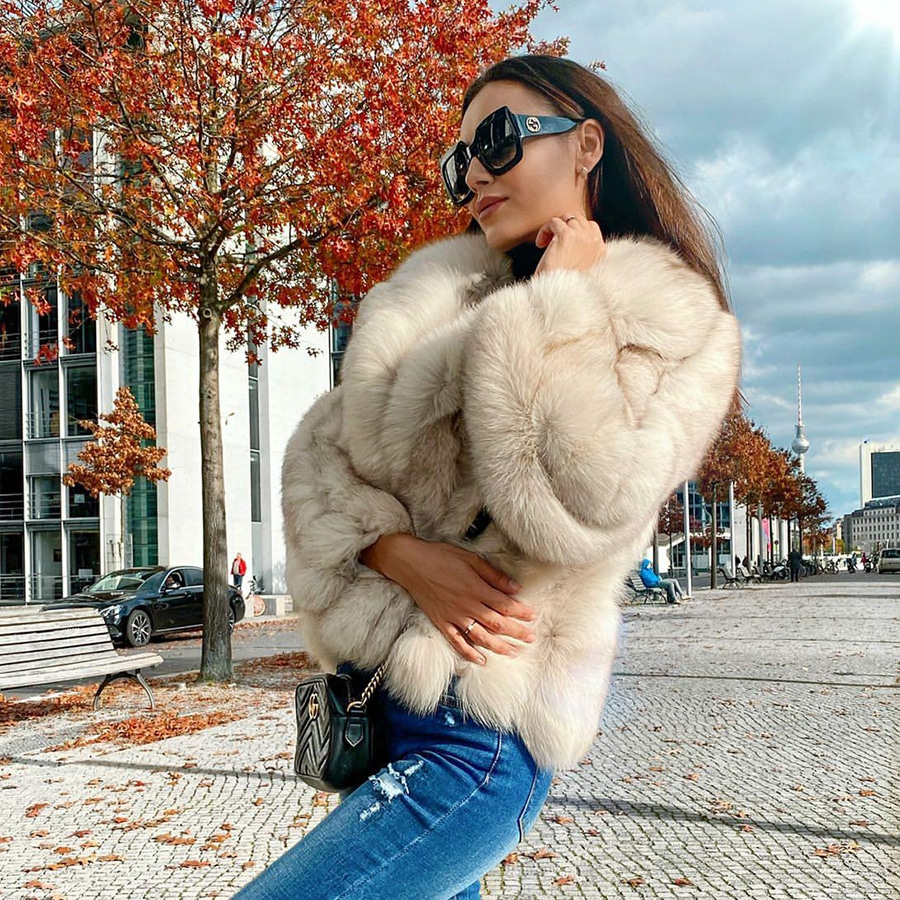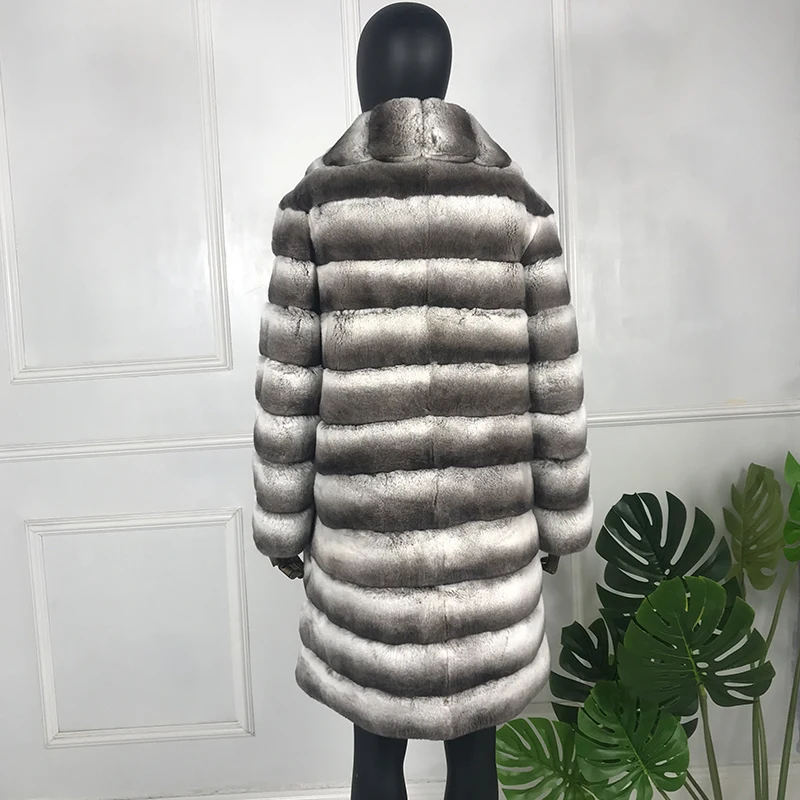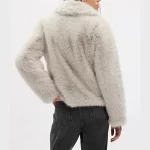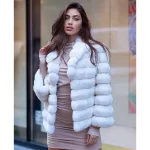The Rise of Ethical Fur Farming
Real fur coat! The fashion industry is seeing a surge in ethical fur farming practices. Ethical fur farming is about raising animals in conditions that prioritize their welfare. It ensures that the use of real fur coat aligns with strict ethical standards. Here are key points about this growing trend:

- Transparency is Key: Farms are now more open about their operations. They allow audits and certifications to ensure they meet ethical standards.
- Improved Standards of Living: Ethical fur farms provide better living conditions for animals. They have more space, natural environments, and proper care which adheres to animal welfare laws.
- Selective Breeding Practices: Ethical farms focus on selective breeding. This reduces the potential for genetic problems and enhances the animals’ quality of life.
- Consumer Demand Drives Change: Today’s consumers demand sustainability. This is pushing more brands to source real fur coat from farms that demonstrate ethical practices.
Ethical fur farming aims to balance fashion with humanity. It strives to provide a viable option for those who choose to wear real fur. By supporting ethical practices, we can help lead the charge for a more sustainable and conscientious approach to fashion.
The Environmental Impact of Real Fur vs. Faux Fur
When we consider outerwear, the environmental impact is crucial. Here’s a comparison between real fur and faux fur:
- Real Fur’s Naturalness: Real fur is a natural material. It decomposes faster than faux fur, which is made of synthetic fibers.
- The Synthetic Problem: Faux fur is often made from non-renewable petroleum-based products. It can take hundreds of years to decompose.
- Energy Consumption: The production of faux fur typically requires more energy. This results in higher carbon emissions compared to real fur production.
- Biodegradability: Real fur has the advantage of being biodegradable. Faux fur adds to landfill waste due to its plastic content.
- Chemical Processing: Both real and faux furs undergo chemical processes. However, the treatment of faux furs often involves more toxins and pollutants.
In summary, real fur coat can have a lower environmental impact than faux fur. That is, when sourced from ethical fur farming. It is also more biodegradable and consumes less energy. Consumers must weigh these factors when making a sustainable choice. They must also consider the welfare of animals and ethical practices. Responsible choices can support a sustainable fashion industry.

How to Verify the Sustainability of Your Fur Coat
When opting for a real fur coat, verifying its sustainability is critical for eco-conscious fashion. Here are ways to confirm that your fur choice aligns with sustainable values:
- Seek Transparency: Look for brands that openly share their sourcing and production processes. Brands that partner with ethical fur farms will often have this information readily available.
- Check for Certifications: Trustworthy certifications from recognized organizations indicate adherence to environmental and ethical standards. Look for labels that guarantee the fur is ethically sourced.
- Traceability Systems: Some brands implement systems to trace the origin of the fur. This allows customers to track the garment’s journey from farm to final product.
- Durability Assessment: A key aspect of sustainability is longevity. Assess the quality of the fur. A well-made real fur coat can last for many years, reducing the need for frequent replacement.
- Investigate the Brand’s Ethics: Research the brand’s commitment to animal welfare and sustainable practices. Support brands involved in continuous improvement of their operations.
- Educate Yourself on Regulations: Be aware of local and international regulations governing fur production. This knowledge will help you make informed decisions.
By following these steps, consumers can make responsible choices when purchasing real fur coats. Each step ensures that behind the luxury, there is a commitment to sustainability and ethical responsibility.
The Role of Animal Welfare in Sustainable Fur Production
Animal welfare is fundamental to sustainable fur production. It ensures ethical treatment and the wellbeing of animals. Here’s how it connects to sustainability:
- Ethical Treatment as a Standard: Animal welfare standards must be high within the fur industry. Fur farms need to treat animals with care and respect.
- Welfare Equals Quality: Better welfare practices lead to higher quality fur garments. It’s a direct link that benefits both the animal and the end product.
- Ongoing Monitoring: Continuous monitoring of animal health is vital. It shows a commitment to ethical practices throughout a fur coat’s production.
- Consumer Involvement: Purchasing a real fur coat comes with responsibility. Consumers should demand fur products derived from animals treated well.
- Legislation Compliance: Laws exist to protect animals in fur production. Sustainable fur practices comply with these regulations to guarantee animal welfare.
- Industry Accountability: Fur producers must be accountable for how they treat animals. This includes providing ample space, proper nutrition, and veterinary care.
In conclusion, animal welfare is not separate from sustainability; it is central to it. Real fur coat producers must align with ethical standards to satisfy eco-conscious consumers. This ensures a future for fur in fashion, grounded in responsibility and care.

Maintenance and Care for Long-Lasting Real Fur Garments
Maintaining a real fur coat properly is essential for its longevity. Here are practical tips to keep your fur looking luxurious for years to come:
- Regular Cleaning: Brush your real fur coat gently with a soft-bristled brush. It removes dust and keeps the fur fluffy.
- Professional Care: Once a year, take your coat to a fur specialist for cleaning and conditioning.
- Proper Storage: Hang your coat on a broad-shoulder hanger in a cool, dark closet. Avoid plastic covers, as they prevent the fur from breathing.
- Avoid Heat: Keep your real fur coat away from heat sources. Heat can dry out the fur and cause damage.
- Steer Clear of Chemicals: Perfumes and hairsprays can harm your coat’s fur. Apply them before you put on your coat.
- Moisture Management: If your fur gets wet, shake it out and let it air dry. Keep it away from radiators or hairdryers.
- Mindful Handling: Be gentle when wearing your coat. Avoid bags with straps that can mat the fur, and keep it away from rough surfaces.
By implementing these care guidelines, you ensure your real fur coat retains its beauty. Your coat will stay durable, allowing you to enjoy its warmth and style sustainably.
Vintage Fur Coats: A Sustainable Fashion Statement
Vintage fur coats are making a comeback as a sustainable choice in 2025. With a focus on eco-friendly fashion, more people are falling for these timeless pieces over purchasing new ones. Here’s how vintage fur celebrates sustainability:
- Reduced Waste: Choosing a vintage real fur coat lowers the demand for new production. This cuts down on the waste from manufacturing.
- Energy Conservation: No additional energy is needed to create a vintage coat. Its resource consumption ended years ago, making it an environmentally conscious option.
- Longevity and Durability: These coats have stood the test of time. Their lasting quality shows that well-cared-for fur can endure for decades.
- Unique Style: Every vintage fur coat tells a unique story. It’s a personal, stylish piece with its own history.
- Value Retention: Good quality fur coats often retain their value over time. This makes them a worthwhile investment for eco-minded fashionistas.
By opting for vintage fur, fashion lovers can enjoy luxury with a reduced environmental footprint. It’s a win for your wardrobe and the planet.
Style Tips: Incorporating Fur Coats into Modern Wardrobes
In 2025, rocking a real fur coat with modern outfits is trending. Here’s how to style them:
- Layer Smartly: Start with a thin base layer. Add your real fur coat on top for a sleek look.
- Balance Silhouettes: Pair bulky fur coats with fitted bottoms. Try skinny jeans or structured skirts.
- Go Monochrome: Create elegance with a single color outfit. Let the fur coat be the statement piece.
- Accessorize Wisely: Choose simple accessories. Let your real fur coat be the focus of your ensemble.
- Mix Textures: Combine different materials for a dynamic outfit. Match fur with leather or denim for contrast.
- Casual Meets Luxury: Wear your fur coat with casual wear. Think t-shirts or sneakers for a laid-back vibe.
- Embrace Colors: Don’t shy away from colored fur. It adds a pop to any wardrobe and shows fashion-forward thinking.
- Care for Your Coat: Remember to keep your real fur coat well-maintained. This ensures it stays stylish through the seasons.
By following these tips, you can wear real fur coats without compromising modern style. Choose pieces that align with ethical fur farming and enjoy sustainable luxury fashion.
Designer Focus: Leading Brands Adopting Sustainable Fur Practices
The fashion industry is witnessing a shift as leading brands embrace sustainable fur practices. These designers understand that longevity and ethics are as important as style. Here are key examples of how brands are incorporating sustainability into their real fur coat collections:
- Commitment to Transparency: Top designers are choosing to work with ethical fur farms that offer full disclosure on their operations. This means every real fur coat has a traceable source, giving consumers peace of mind.
- Use of Certifications: Industry-leading brands now sport certifications from credible agencies. These serve as proof that the fur is sourced in line with animal welfare and environmental standards.
- Innovation in Durability: To ensure real fur coats last longer, brands invest in high-quality materials and craft. A durable coat reduces the need to manufacture new ones frequently, cutting down on waste.
- Support for Vintage Markets: Many designers are now promoting vintage fur coats. They refurbish older furs, giving them a new life and reducing the need for new fur production.
- Education on Maintenance: Knowledge on how to care for fur garments is being spread by designers. They provide tips to consumers on maintaining their real fur coats, keeping them in prime condition for years. This encourages a culture of care and sustainable use.
These brands prove that fashion can be both glamorous and environmentally responsible. By adopting sustainable fur practices, they set a standard for the industry and offer a guilt-free luxury to consumers. Remember to look for these sustainable efforts when shopping for a real fur coat to ensure you support a cleaner and more ethical fashion future.


